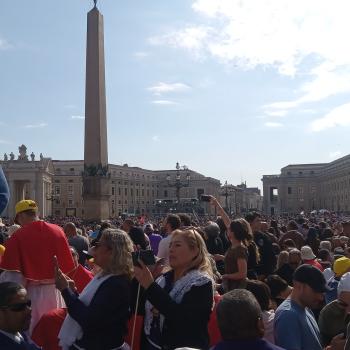In the latest NY Times Book Review, discussing a book by John Allen Paulos called “Irreligion: A Mathematician Explains Why the Arguments for God Just Don’t Add Up,” Jim Holt comments that mathematicians believe in God at a higher rate than academics of certain other disciplines. He then goes on to say:
So you might say that mathematicians are no strangers to belief in the unseen. (Of course, mathematicians don’t drag their beliefs into the public square, let alone fly planes into buildings.)
Wow. What a view of “religion.” I’ll put aside the question — I don’t know the answer, but I suspect it does not begin with “of course” — whether religious mathematicians are more scrupulous than others are about leaving behind their “beliefs” on those occasions when they enter the “public square.” Let’s even roll our eyes and move past the use of the word “drag” — a word that suggests a strange understanding of both belief and of normal human beings. After all, one might think that it is perfectly natural for “our” beliefs to accompany “us” — without any need of “dragging” — wherever we go. What really strikes me is this move from “drag[ing] . . . beliefs into the public square” to “fly[ing] planes into buildings.” What on earth would make Mr. Holt write — after a few sentences about Platonism — that two features of religious believers, which mathematicians “of course” do not share, are (a) a propensity to “drag” beliefs where (presumably) they don’t belong and (b) a propensity to fly planes into buildings.












